Stoves for tents: description, varieties and choice

During long hikes and expeditions in the cold season, travelers cannot do without a heat source in a tent, just like ice fishermen. In order to have the opportunity to have a good rest at night, the simplest and most effective means is a tent stove. Consider the main types of the device, its differences and range of application.
Peculiarities
The device is intended not only for heating the lodging for the night. It can also be used as a hotplate for cooking and boiling a kettle. And there is also the possibility of drying wet clothes and shoes in the immediate vicinity of the oven. But leaving shoes or clothes on the surface of the stove can lead not only to damage, but also to a fire in the tent. When choosing a unit, you need to rely not only on the popularity of the manufacturer's brand, but also on the material from which the stove and chimney itself are made, the diameter and direction of the pipe.
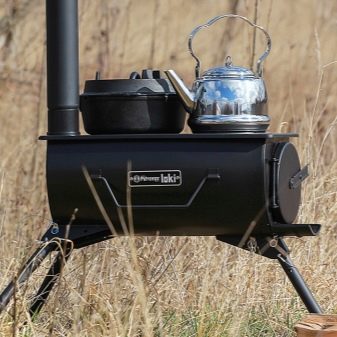
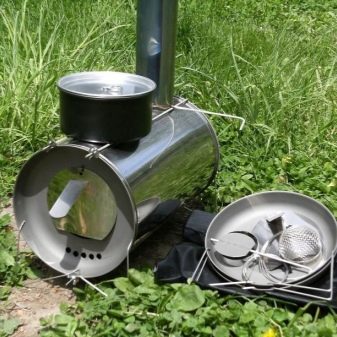
Such a device has a number of advantages:
- relatively small size, which attracts most buyers;
- good result in heating the tent;
- a light weight;
- ideal for use in both winter and ordinary camping tent.
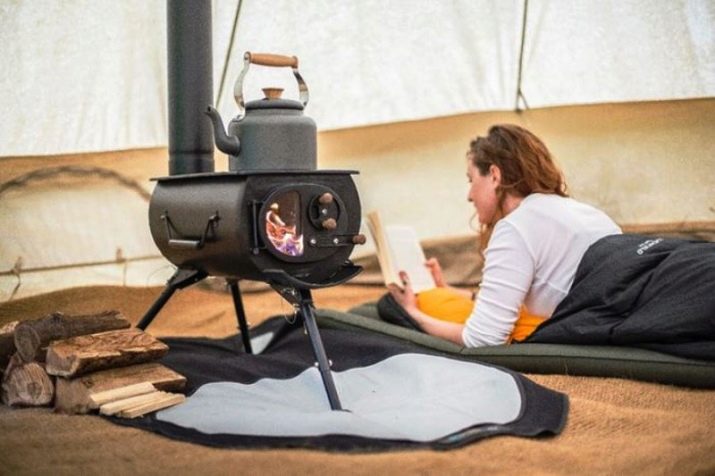
No matter how good this acquisition is, it will always have flaws that not everyone can easily put up with.
- High cost. Not every traveler will be able to afford such equipment.
- Size can be both an indisputable plus and a significant minus. for a specific hike if it runs through dense forests or rocky terrain. This applies only to species that cannot be disassembled.
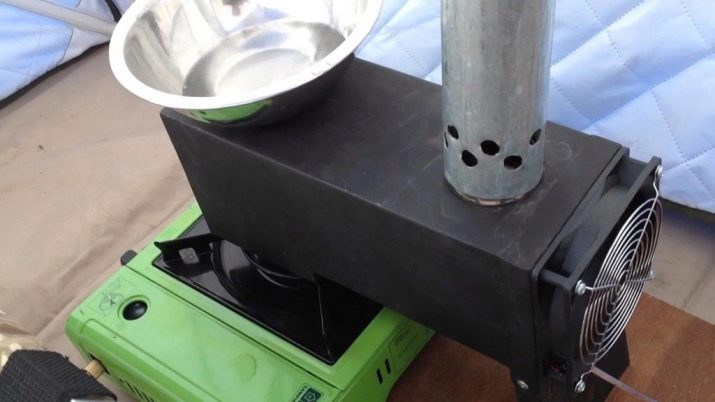
Important to consider material and purpose of the tent itself. As a rule, winter tents are designed for the use of heating accessories in them; denser materials are used in their manufacture. Also, these types of tents have a double layer of walls, which does not allow too much heat loss, which cannot be said about the usual summer camping tent. If there is a need to use heating in it, then some precautions must be taken.
For example, find out the characteristics of this tent and make sure that the material of a simple model can withstand high temperatures, as well as install the stove itself away from the walls of the tent.

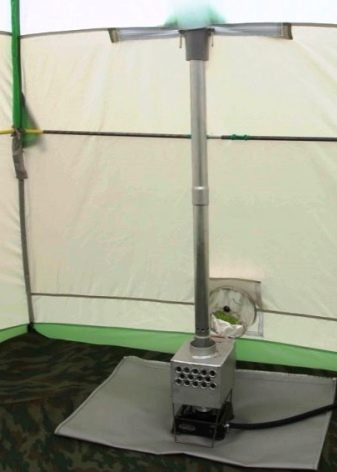
Kinds
Although outwardly all the stoves are very similar, they have a lot of differences: according to the principle of operation, design and installation methods in the tent itself. All devices differ in wood and gas.
The wood burning stove is the most common type. Its main advantage is an almost infinite supply of fuel. While the gas will work until the gas in the cylinder runs out, which will not be difficult to bring with you. This heating option will be relatively inexpensive, most importantly, safe to use.
This indispensable thing will suit fishermen in the winter, as it will be much easier to bring a gas cylinder with you than to drag a bundle of firewood with you.
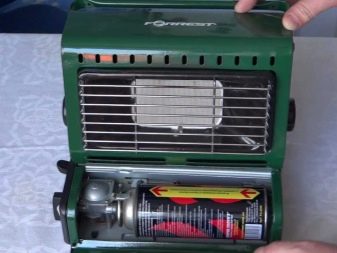
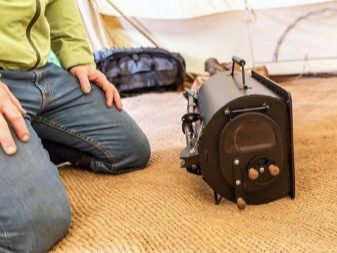
Probably the most recognizable stove - "bourgeois". Over the decades of its existence, it has undergone hundreds of modifications, but the principle of operation has not changed. It does not have a specific geometry, it can be round or square, it has good heat dissipation. This option is very popular with those who like to do everything with their own hands. The potbelly stove is characterized by low costs and a good output.
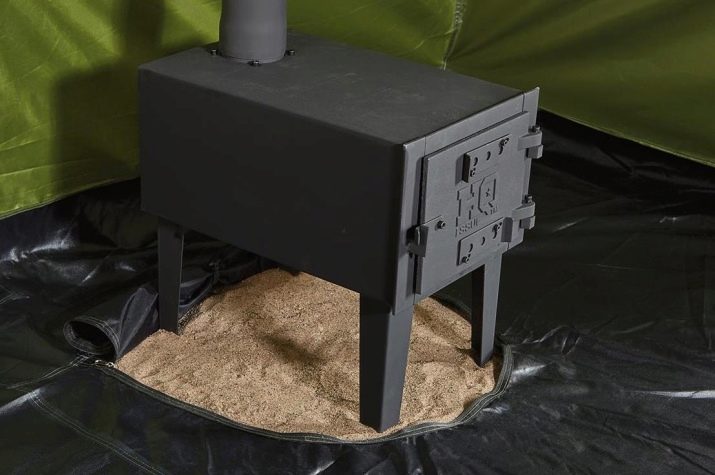
Good for hikers collapsible mini ovens. They are light weight and take up very little space when disassembled. In terms of functionality, they are in no way inferior to their “adult” counterparts, with the exception of one problem inherent in all collapsible stoves: without stiffening ribs, they bend strongly from temperature. As a rule, collapsible stoves are relatively inexpensive. The price depends on the material used in the assembly process.
The better the material is resistant to high temperatures, the higher the cost.
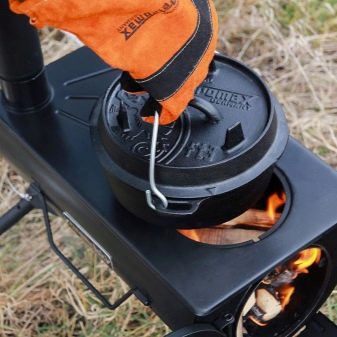
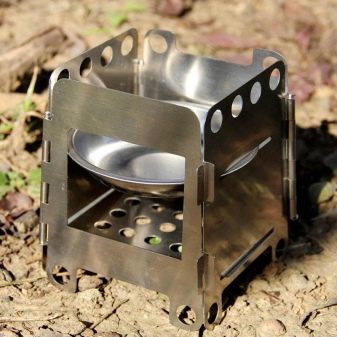
When it comes to large tents for 10 people, as well as heating small areas, such as a storage room, basement, etc., the stove must match the volumes. For such needs, a portable stove is suitable. It is often chosen by summer residents, geologists and rescuers. This choice is due to the relatively small size and weight of the furnace, its economy, reliability and efficiency.
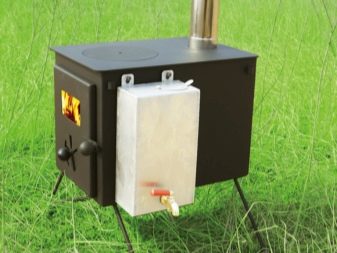
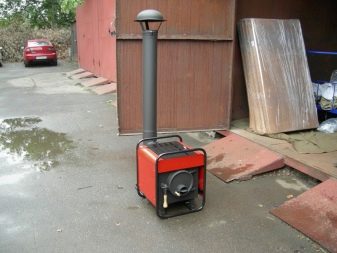
Such a device is easy to move from place to place, it does not require a lot of fuel, it is easy to install and will not interfere with other things.
In the manufacturing process of furnaces, materials such as cast iron and titanium are used. Cast iron and titanium devices are more reliable, but quite heavy. Models made from these metals are durable and resistant to high temperatures, but are quite rare.
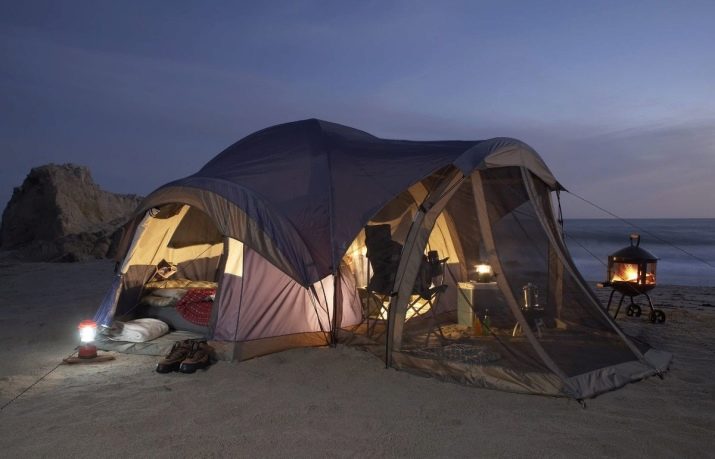
When looking for the perfect tent stove, you need to understand that there is no one universal model for all life situations. Each option is designed for some specific purposes.
Popular Models
On sale there are many options for every taste, color and wallet. Let's analyze the most common types, which are preferred by most lovers of hiking.
Perhaps the most desirable stove in every tent is housekeeper. Not only for its ability to quickly warm a tent, but also for its beautiful appearance that will decorate the interior of any shelter. Consider the features of this stove on the example of products Bereg company. The main advantage of this device is its compactness and light weight, food-grade heat-resistant stainless steel is used in production.
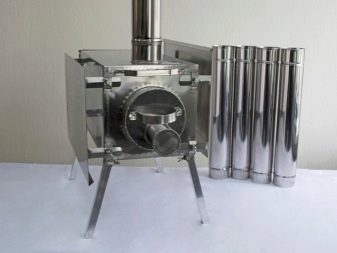

The material is resistant to high temperatures and does not corrode. Even small deformations during transportation will not impair the characteristics of the furnace. The presence and ability to install and dismantle protective screens, if necessary, can add security when left unattended for a short period of time.
The stove has a removable glass on the blower, which allows it to be used in long-term burning mode for 5 hours on one firewood tab. This eliminates the need to constantly monitor the fire and throw up firewood. Removable aluminum legs are attached to the body with wing screws. This provides good stability and fast assembly.

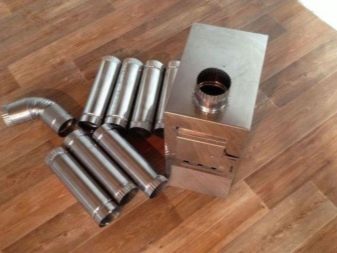
When disassembled, the device has a compact size and a carrying bag. Many other models have a significant drawback in the form of separately portable parts of the chimney. In the same instance, this problem was solved by folding the collapsible chimney inside the firebox, saving space.
The second no less useful, popular model of the stove is "Tourist Gorynych". Such a device has a round body made of high-strength, heat-resistant stainless steel, resistant to deformation from high temperatures. The end parts are in the form of cones, which gives more rigidity to the structure. The inner part of the ends is supplemented with stone wool for improved thermal insulation.
This ensures that the firebox is properly heat dissipated in the right places, and also protects the awning and your hands from accidental burns.
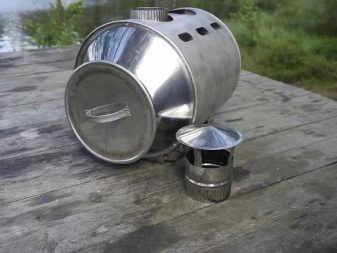
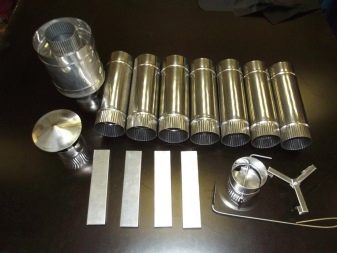
To improve convection, increase heat output and safety properties, Gorynych stove models are equipped with protective cover. This element is a very important and useful part of the device.
The tourist stove "Gorynych", powered by firewood, can be converted to other types of fuel. One of the features of the device is the possibility of additional installation of a gas or diesel module. These elements can make the stove a multi-fuel camping heater with many useful functions.

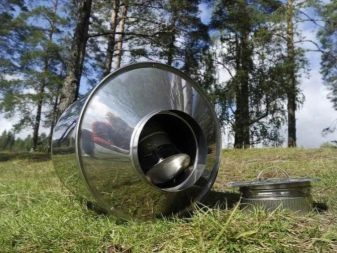
One of the main criteria for choosing a furnace is fire safety. In the described instance, a lot has been done for this purpose. This unit has 2-level spark detection system (a chipper in the inside of the furnace itself and an umbrella catcher on the pipe). In addition, the chimney is equipped with an additional spark arrester, which prevents sparks from flying out.
Protection against accidental ignition of grass or the floor of the tent will provide high legs-stands and a convenient box for ash waste, and design features make it possible to avoid excessive heating of the chimney pipes. Auxiliary protection of the owner and the material of the tent is provided due to the "cold" execution of the front and rear walls of the furnace, as well as the protective casing.
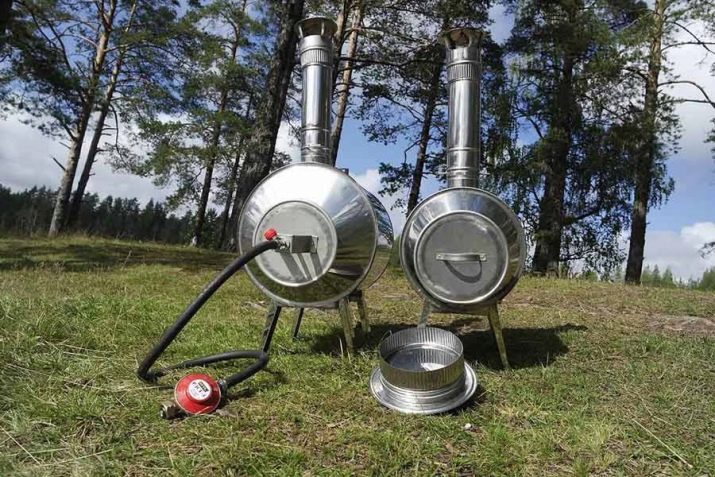
In addition to well-known brands and models, you can also see budget stoves on the shelves. As a rule, they are made in the image and likeness of well-known brands with slight differences, for example, in the quality of the metal used. Such a stove is more susceptible to temperature deformation - the thinner the “black” metal used in production, the shorter the service life of the device.
Otherwise, these stoves will work in the same way as a conventional wood-burning stove. With all the disadvantages of cheap models, they have one very significant plus, often outweighing even good models from well-known manufacturers - this is the price. Such options are very cheap compared to those described above.
How to choose?
With a huge number of different options on the market for all occasions and for any budget, the main question remains: which model to buy. It all depends on:
- under what conditions it will be used;
- for what area it will have to be used;
- on what size of the heated area.
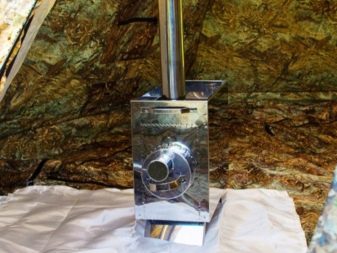

Almost every model on the market is designed for certain operating conditions.
For example, on a hiking expedition through the taiga, it is not advisable to purchase a gas-fueled option, since it is illogical to heat with gas in the forest, and it’s not very pleasant to carry even a small gas cylinder.Or a fisherman, going fishing in the winter, being on the ice (in the middle of a river or lake), it will not be so convenient to run to the neighboring forest for firewood. That is, for a fishing tent, it is easier and cheaper to operate a gas stove, and for an expedition in a forest, a wood-burning model will be appropriate.
Having decided on the conditions in which to use this device, you should pay attention to the material from which it is made. The quality of raw materials directly determines how safe the purchase will be.. It must be done made of quality materials, without visible defects indicating a fake. It is advisable to buy such things in specialized stores that can give a guarantee for the product.
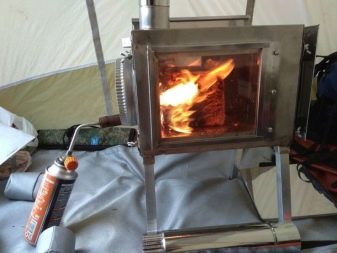
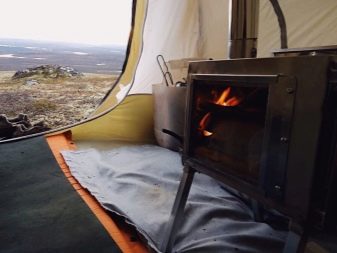
Operating rules
To install a stove in a tent, you will need to prepare a place for a specific model. It all depends on its design and installation method. When choosing it, one should not forget about safety precautions. It is forbidden to install the stove too close to the walls of the tent. According to the instructions, we assemble the firebox and stand, if they are disassembled. Next, we proceed to the assembly of the chimney, we are also guided by the instructions.
Pipes must be tightly connected and fit into each other with a little effort until it stops against the flared part. After the final assembly, you can proceed for leak testing. To do this, you will need to build a small fire in the firebox to see if there is a smoke leak. If found, it must be eliminated.
It is impossible to melt the furnace with full force after assembly without checking. After the test run, you can start heating the shelter.
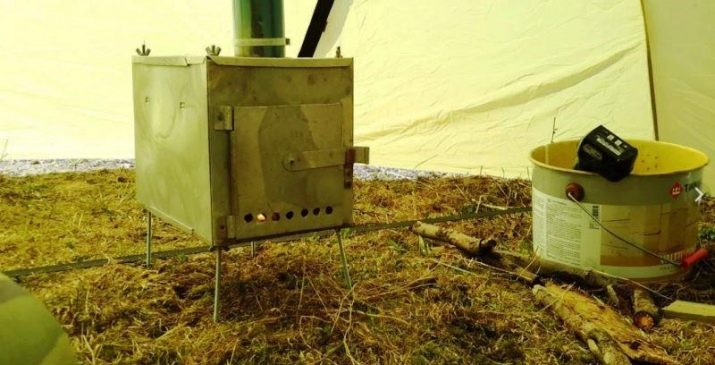
How to do it yourself?
The manufacturing process itself is relatively simple.You will need at least a finished drawing in order to know how many and what size parts will be needed. Enough of the initial skills of the welding craft (if welds are supposed to be). And also it can be a collapsible version, completely cut out of sheet metal. Then welding will not be needed. But not every product will require such an amount of material and time.
It is possible to make a small stove even from the garbage that is lying around in the garage, namely: from one metal mug and a certain number of cans.
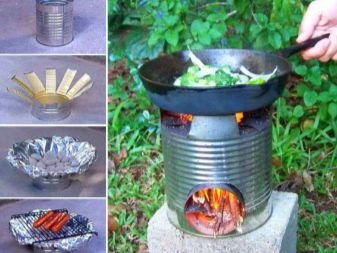
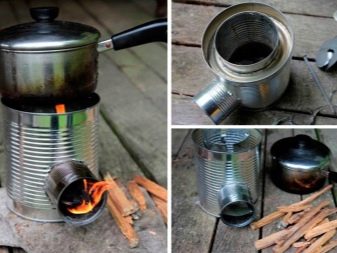
You will need the following components:
- jars left over from canned food (height 6 cm, diameter 10 cm) - 2 pcs.;
- mug made of metal (diameter, 1 cm less than that of cans) - 1 pc.;
- bolts;
- washers;
- TV antenna;
- terminal (suitable from an old power supply).
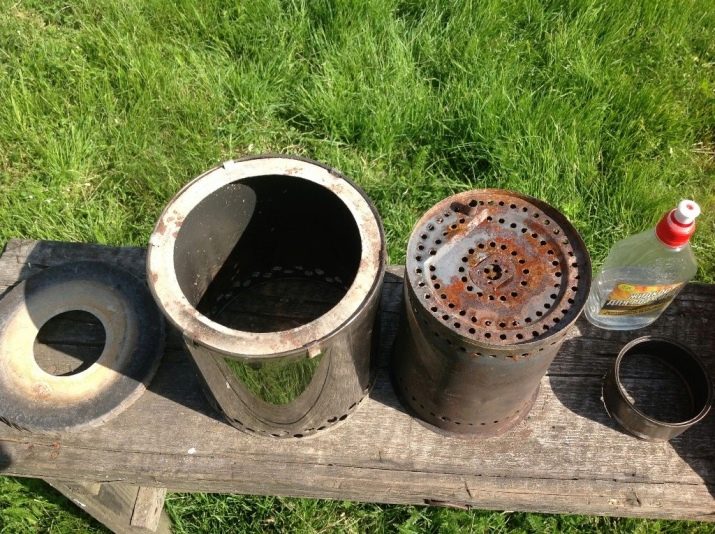
Putting it all together.
- Existing irregularities and pointed edges of the cans need to be leveled. You can use pliers for this.
- We cut a round piece from tin with a diameter of 3 cm with three petals. We bend the last at an angle of 90 degrees. Holes of a suitable size are made in the bottom of the jar so that the tips of the petals are placed in them.
- The circle must be placed under the bottom of the jar. We fix the petals in the holes. The resulting compartment will serve as a firebox.
- We retreat from the top of the jar 2 cm and make three holes of 5 mm at the same distance from each other. We insert bolts into them, reinforcing them with washers.
- The mug must be fixed on the bolts.
- We make 3 legs from the antenna. You will need to make new holes to which they will attach.
- We make a lid from the second can. It should be firmly and tightly attached to the top of the stove in order to retain more heat.The handle from the terminal can be placed in the central part of the cover.
- On the bottom of the resulting oven, you will need to prepare 5-6 holes at the same interval from each other.
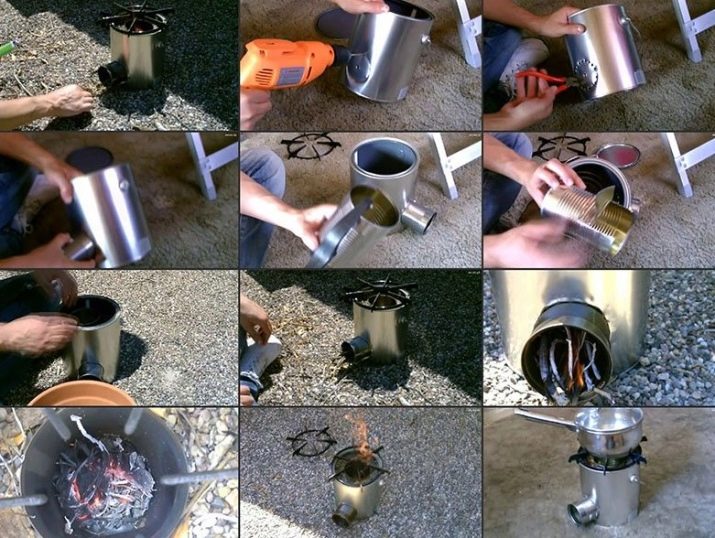
For information on how to choose stoves for tents, see the following video.




























